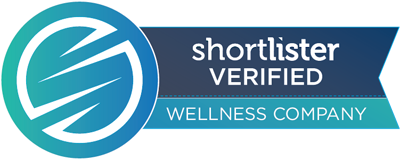
When evaluating the success of any financial investment, companies often refer to the familiar concept of ROI to determine whether they have made a sound commitment. ROI, or, Return on Investment, describes the money that a company will make compared to the cost associated with a particular operation.
Employee health and wellness programs are financial investments, and while they often provide a financial return, ROI doesn’t always measure their full worth. More and more, companies are using VOI — Value on Investment — as a more holistic metric to evaluate workplace culture and employee wellness.
Using Value on Investment to Measure Employee Wellness
VOI enables companies to have a more complete picture of the benefits of their employee wellness programs. In addition to calculating the financial return on an investment, VOI also factors intangible values such as employee morale, retention, and productivity into its analysis. This approach can help employers better understand the culture that they are creating around employee wellness and determine how this contributes to the overall goals of their workplace.
Harnessing Data and Centralized Wellness Platforms
Establishing a metric for evaluating VOI can be challenging because it represents a variety of values that can differ depending on the priorities of a particular workplace. Having a centralized, digital platform that brings all of a company’s health and wellness programs together can allow employers to extract tangible data about the values of their workplace culture. Sprout’s unique platform offers administrators a centralized portal where they can engage with their employees, and access aggregate data. It also gives users the opportunity to connect with one another securely, and access information and resources conveniently.
-----
Check out the Ultimate Guide to Workplace Wellbeing
-----
Attracting and Retaining Employees
Using a digital employee wellness platform can do more than foster a robust wellness culture in a workplace and help a company measure VOI. It can also help to attract talent and make a company more competitive by giving employees the kind of mobile wellness tools they’re looking for. For example, the Sprout app can be accessed through any mobile device, and can also be integrated with Apple Health, Google Fit, Fitbit and other wearable activity trackers. Not only does this ensure that current employees are more engaged in the workplace, it also helps to establish that a company genuinely listens to its employees and cares about their health and wellness. Ensuring that employees feel valued helps to attract talent in competitive industries and retain top team members. Now that’s worth measuring.
Expanding Corporate Wellness Beyond ROI
Employers must consider the financial implications of employee health and wellness decisions, but there are many benefits that are overlooked in traditional ROI analyses. By expanding to a VOI framework, employers can include a broader range of important factors, like sick days, turn-over rates, or prevalent benefits claims — in addition to cost — helping to determine whether they have a wellness culture that is really fostering a productive environment.
While the exact metrics that an employer uses depend on the priorities of their workplace, having a platform that helps to engage with employees and keeps track of data can be the first step towards achieving workplace wellness goals in a way that’s truly valuable.
